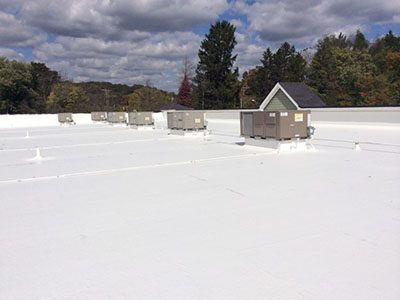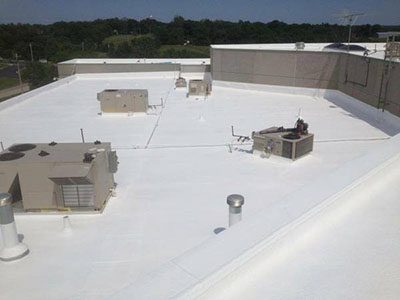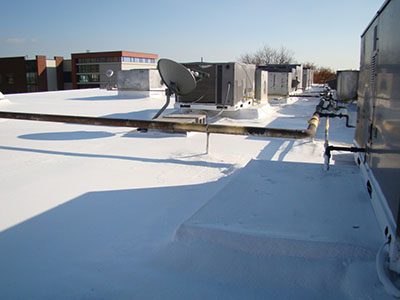Other Commercial Single-Ply Roofing
Single-ply roofing systems are an excellent way to protect your existing roofing structure.
Single-ply systems come in 2 basic formats – thermoset or thermoplastic. Thermosets are synthetic rubber-based materials, with polymers added to improve UV protection, adjust color, or provide increased reflectivity. Thermoplastics are broken down by the base materials used, primarily thermoplastics and polyvinyls. Both also have additional polymers added to increase resiliency, strength, color, and/or reflectivity.
Determining what type of membrane is best for your building includes a lot of factors, including location, roof pitch, underlying substrate, and personal preference. This is where a partnership with a highly professional roofing company like MK Roofing really matters.
Our expert staff is here to do more than the roof; we’re here to advise you, answer questions and ensure you get the highest possible return on your roofing investment.
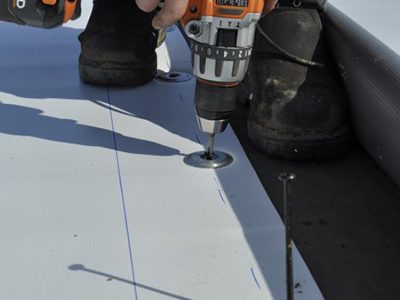
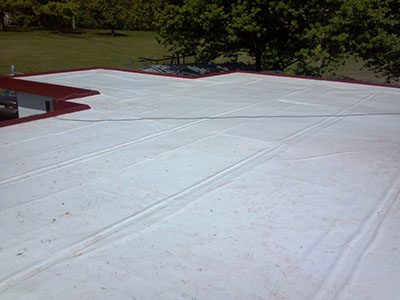
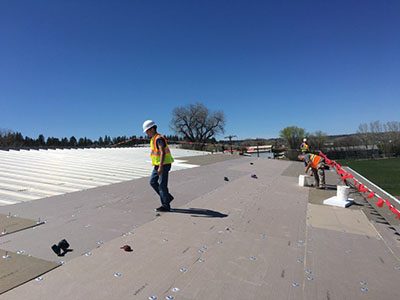
Types of Single-Ply Coverings
There are 2 basic types of single-ply systems, thermoset, and thermoplastic. Within these groups, there are 3 commonly used membrane materials:
1. EPDM. EPDM, or Ethylene Propylene Diene Monomer, is a thermoset material. To be a little less technical, EPDM is a synthetic rubber compound. Strong and flexible, EPDM single-ply membranes have some wonderful benefits to consider:
History. EPDM has been on the marketplace for about 60 years. It is a tried-and-true roofing material that has stood the test of time.
Attachment.EPDM is usually mechanically attached to your roofing structure. That means that anchors and screws physically attach the 2 pieces together.
Longevity. EPDM membranes generally have a lifespan of about 20 to 25 years, depending on maintenance, location, and environmental factors.
Seams. Seams are usually fused with seam tape.
2. PVC. PVC, which stands for polyvinyl chloride, is a thermoplastic material. Designed primarily for flat or low-slope roofs, PVC is manufactured in rolls, which are then rolled onto your roofing structure. In existence since the 1960s, like EPDM, PVC has a long history of successful roof protection. Other considerations for PVC are:
Energy efficiency. Highly reflective options are available. This reflectivity allows for heat to be deflected from the roofing surface. This creates significantly less electricity demand and may result in savings of up to 50% on your building’s cooling costs.
Attachment. PVC may be attached either chemically or mechanically, depending on the roof slope, roofing structure, substrate, and owner preference.
Longevity. PVC membrane systems have an average lifespan of around 20 years when properly maintained. Obviously, location and environmental hazards will play a role in how long yours will last.
Seams. The seams of PVC membranes are heat fused with a torch, virtually “melting” them together into a seamless, cohesive unit.
3. TPO. TPO, or Thermoplastic Polyolefin, is another thermoplastic material and is our preferred single ply roof system. Read more TPO Roofing here.
